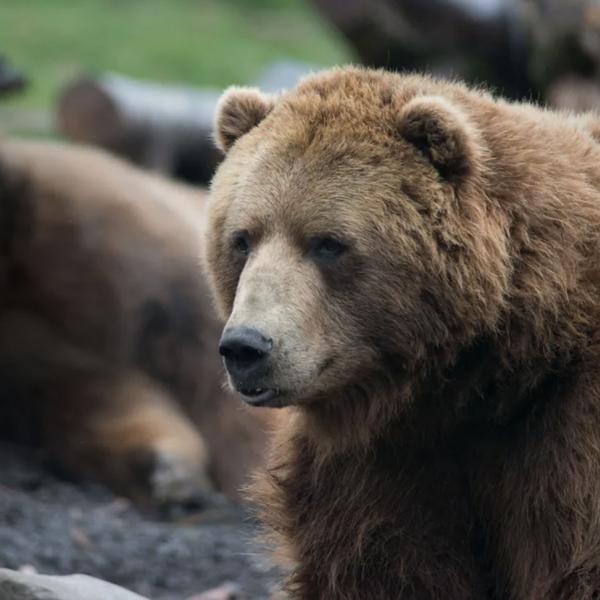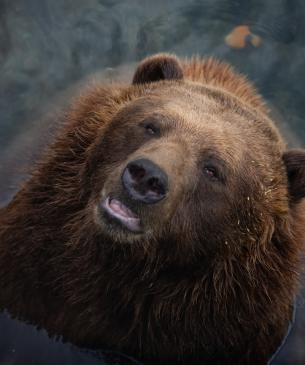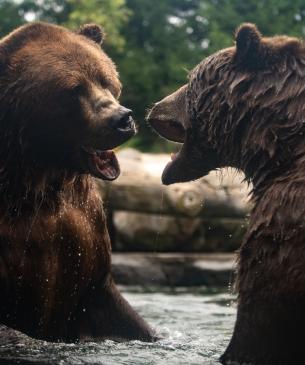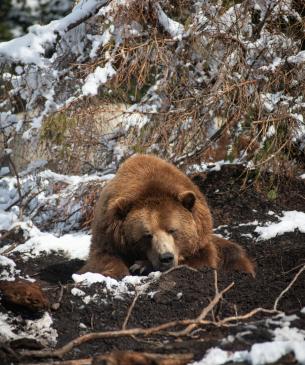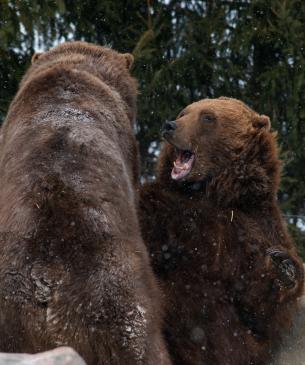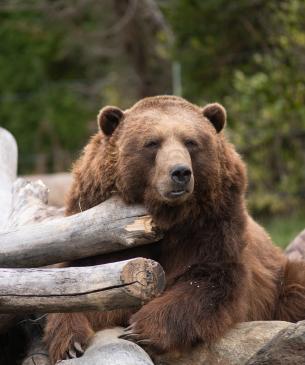Bears are omnivores, eating plant and meat items that vary depending on the season.
In the summer they will consume berries, during fish spawning season, many fish will be caught, and will also dig for tubers with their claws. Trout and salmon provide a lot of nutrients to help them put on weight for the approaching winter months.
Scientific Name: Ursus arctos
Conservation Status: Least Concern
Size: 4 to 5 feet at shoulder, 8 to 10 feet on hind legs
Weight: Males, 330 to 1500 lbs. Females, 215 to 660 lbs

